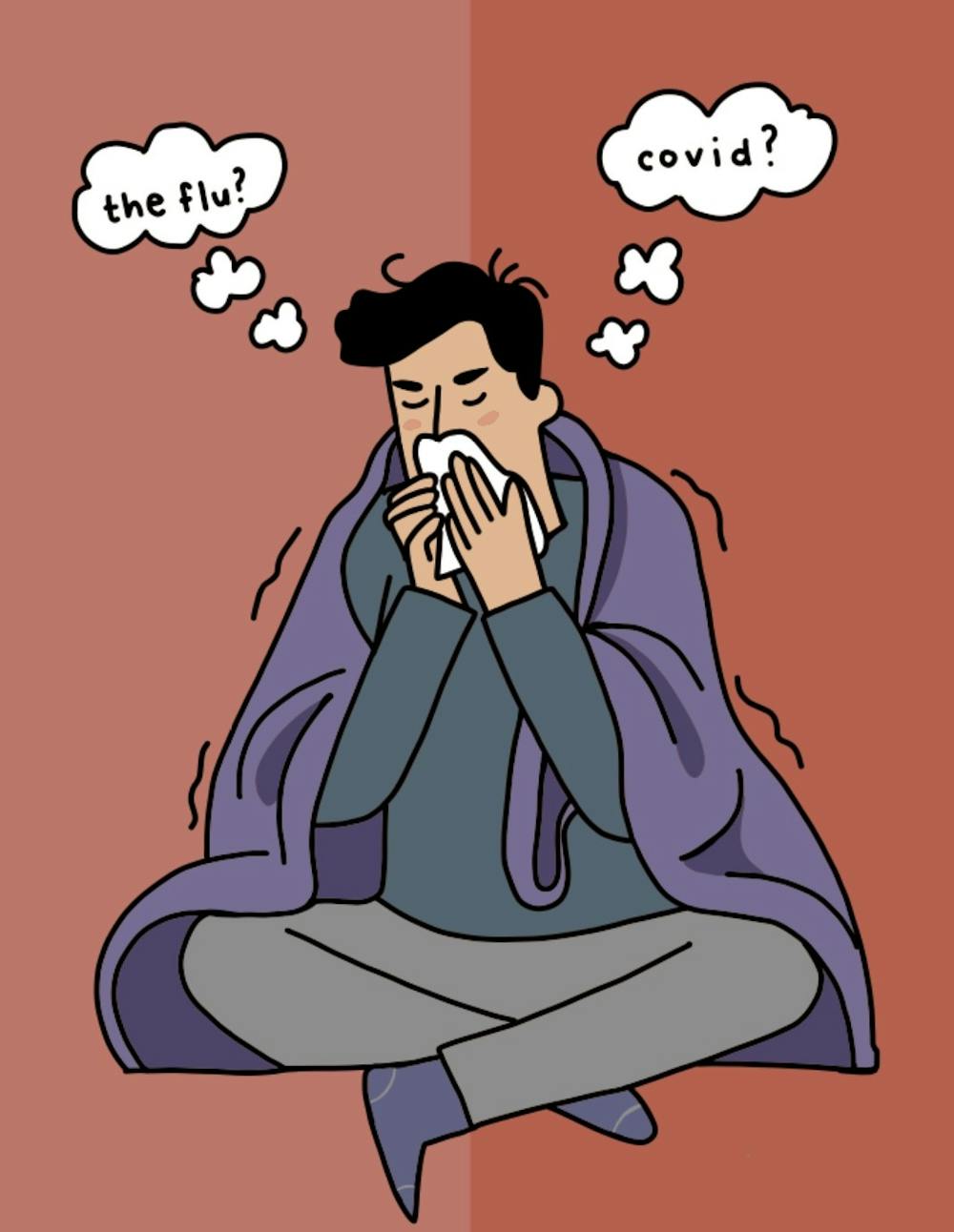With the flu season and winter weather less than two months away, health officials around the world have raised concerns about the unpredictable ways these factors could worsen the continuing COVID-19 pandemic. Not only could colder weather perpetuate the virus by increasing indoor congregation and naturally weakening the immune system, but identical viral symptoms seen in COVID-19 and influenza may cause confusion in diagnoses. Despite the negative effects of this novel combination, the increased awareness brought to respiratory illness and maintaining sanitation practices may reduce the impact of the coming flu season, as was seen in Australia this year.
When it comes to colder weather, Taison Bell — critical care for infectious disease physician and director of U.Va. Health’s medical intensive care unit — explains that a lot of the body’s natural defenses against viruses and bacteria wane in the wintertime. This makes people more susceptible to respiratory viruses, such as COVID-19, during colder months. In addition to decreased temperatures, influenza prevalence is a large concern for physicians. For patients experiencing a fever, cough or shortness of breath, both flu and coronavirus diagnoses will immediately be on the table in addition to other respiratory illnesses such as respiratory syncytial virus and pneumovirus.
“Every sniffle, every cold … COVID-19 will have to be considered before anything,” Bell said.
When it comes to deducing the proper diagnoses, Bell says that many physicians will have to rely on pretest probability, meaning the likelihood that a patient has contracted a specific virus based on their recent experiences and encounters.
“If someone came from a congregate living facility where there are a lot of COVID-19 infections … I might say that this is a high probability for COVID-19,” Bell said. “If the test is negative, I might bump that into the category of a false negative and treat that patient like they have COVID-19.”
In contrast, if a patient’s household has had recent cases of influenza, physicians would be less likely to diagnose COVID-19.
Due to symptom confusion, Bell noted the possibility of a big disruption in work schedules, especially for essential workers. Prior to the pandemic, “not feeling well” did not prevent people from showing up to work each day unless a fever was involved. Now, any slight health disruption holds the possibility of the coronavirus.
Patrick Jackson — assistant professor in the Division of Infectious Diseases and International Health — predicts a higher demand for testing, isolation rooms, personal protective equipment and hospital staff as a result of overlapping symptoms between influenza and COVID-19. Jackson, who is also one of the site principal investigators for the adaptive COVID-19 treatment trial, mentioned that there are tests that can test for multiple respiratory viruses at one time, though the number of them could be limited.
“If the supplies of those things are limited, we may need to think very carefully about the sorts of patients who get tested versus don't,” Jackson said.
In contrast to colder weather, predictions regarding the overlap of COVID-19 and influenza are not all negative. According to Bell, influenza and COVID-19 spread in the same way, so protection from one virus also protects from the other. Australia has already seen lower influenza activity this year, and health officials, including the Centers for Disease Control and Prevention, have attributed these lower numbers to increased social distancing, hand washing and mask wearing that has occurred since the start of the pandemic.
“Now that [America’s] focus has turned to these respiratory illnesses, we have an opportunity to educate the public again about influenza and to make sure people understand that this is also a serious illness,” Bell said.
In 2008 and 2009 during the H1N1 — or swine flu — outbreak, there was an increase in the number of people receiving flu vaccinations, and both Bell and Jackson hope to see similar increases in the coming season.
“It may be that people's awareness of COVID leads to greater uptake of the flu vaccine, which I think would be really helpful,” Jackson said.
Each winter, U.Va. Health prepares for an influx in inpatient admission due to influenza and other respiratory viruses. Everything is charted from when the influx of cases begins to when it peaks to when it finally diminishes. This year, Bell predicts that they will simply incorporate COVID-19 cases into this surveillance.
“The difference is patients with respiratory illnesses from COVID-19 are going to be isolated in a specific part of the hospital, whereas influenza patients are going to be in usual areas of the hospital,” Bell said.
Due to the fact that COVID-19 and influenza are so similar, concerns have also arisen regarding COVID-19 becoming a seasonal virus as well. According to Jackson, physicians are not entirely sure that SARS-CoV-2 is going to be seasonally variable, though they must still be prepared for that situation. Jackson also predicts that current testing platforms currently dedicated to seasonal flu tests may also incorporate coronavirus testing in the future.
Despite not knowing whether COVID-19 will be a seasonal virus, research has found that the genetic makeup of coronaviruses mutate much slower than the genetic makeup of flu viruses. This would prevent the coronavirus from mutating as quickly as influenza, opening up the possibility of creating a coronavirus vaccine with long-lasting immunity.
“Then, [a coronavirus vaccine] may not be the sort of thing you would have to get every year,” Jackson said. “You would expect less chance of the [coronavirus] escaping that vaccine, unlike influenza.”







